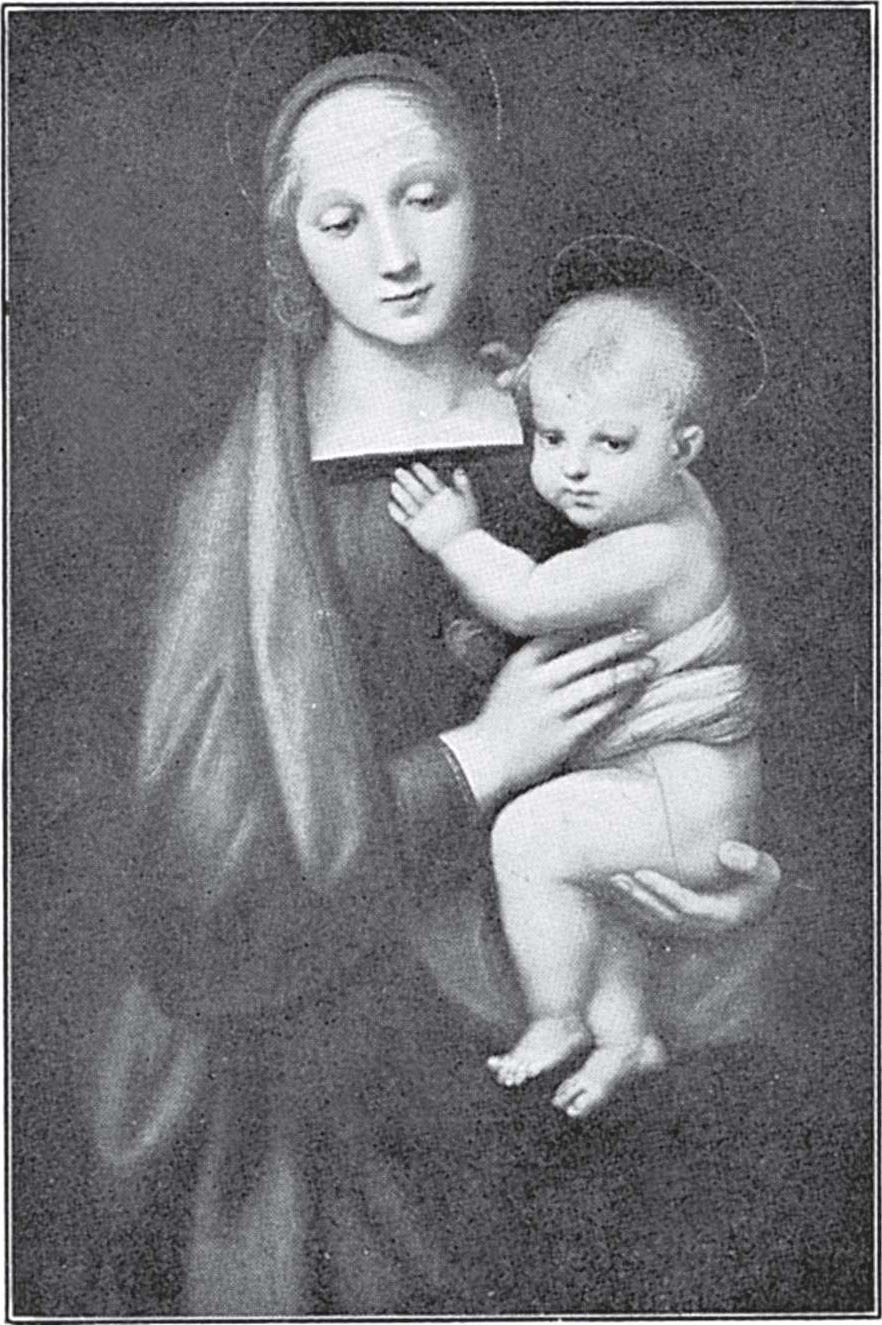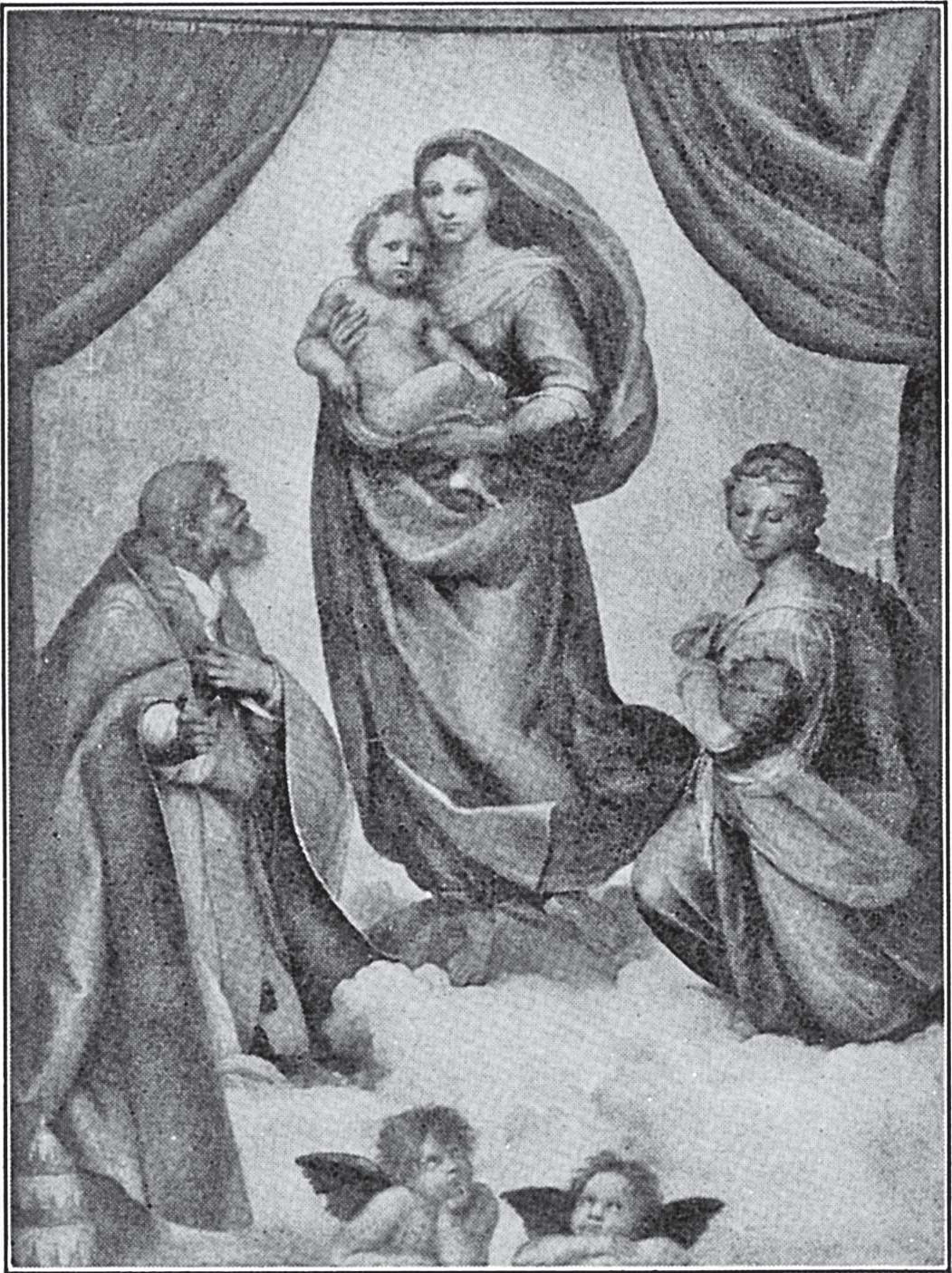





M ANY towns are named for persons — Washington, St.Louis Jacksonville, and others. It is not so often that persons are named for towns, but here is a painter who was named for one. The town was Perugia, in Italy, and the man was called Perugino (Pay-roo-jee’no). He wasn’t christened Perugino, but most people have forgotten what his real name was. Perugino wasn’t even born in Perugia, but he went to live in that town and started a school for painters there.
You can tell whom some letters are from before you open them, just by the handwriting on the envelop. In the same way you can tell a picture that Perugino has painted even if it hasn’t his name on it. He painted Madonnas and saints and after you have seen several of them, you can recognize others he did, even though you may not be able to tell just how or why. Usually they have their heads bent to one side, a very sweet expression, and usually the figure has one knee bent.
Perugino painted many beautiful pictures, but he is chiefly famous because of one of his pupils. This pupil was a boy who many people feel became the greatest painter of all time. His name is Raphael. Raphael studied with Perugino for three years. By the time he was nineteen years old he had learned everything that his master could teach him, so he started out for himself. He died when he was thirty-seven years old, but he was such a hard worker that he had painted or drawn over a thousand pictures by that time. Indeed, we are told that he died from overwork.
Raphael must have done about one picture a week, and some of his paintings are very large and have many figures in them. The only way he could have made so many, and the way we know he did, was to have his pupils help him. He always painted the faces himself, but his pupils painted the clothes and hands and other less important parts of the pictures.
It would take several books with a picture on each page to show all of Raphael’s paintings. One of the most famous is“The Madonna del Gran Duca”. It was called so because it was bought by a grand duke who prized it more highly than all his riches. In fact, he was not willing to have it hanging on the wall of his palace or placed in a vault for safe-keeping.He wanted it with him all the time and is said to have carried it with him in his carriage wherever he went so that it would never be out of his sight.

NO.11-1 THE

The grand duke is now dead, of course, and “The Madonna del Gran Duca” is in an art gallery in Florence,where every one can see it as often and as long as he likes,if he can afford to go there. How fortunate, you may think,for the people who live in Florence, who can see it every day without cost! Yet I know people living in Florence who have never seen it. Strange? That seems to be the way with people.Some people go thousands of miles and pay thousands of dollars to get there, while those who live almost next door don’t or won’t “go across the street” to see the picture.
Raphael painted another Madonna called “The Madonna of the Chair.” It is a tondo. Do you remember what that is? It is a round picture.
The story is that Raphael was walking one day in the country when he saw a young mother sitting in a doorway with her little baby.
“What a beautiful madonna!” Raphael said to himself.“I must paint her now, on the spot where she is, before she changes.”
He looked around for something to paint on and, in a rubbish heap near by, he saw the round top of a barrel. So he sketched the young woman and her baby then and there with a pencil. And as soon as he reached his home he made the painting of them.
But the most famous picture in the world is another Madonna by Raphael called “The Sistine Madonna” or “Madonna di Sansisto” from the name of the church where it was first placed. It is not there now, however, but in a gallery in Dresden, Germany, where it has a room all by itself, for no other picture is thought worthy to be hung in the same room.


NO.11-2 THE

Many Madonnas that I have shown you may be beautiful themselves, but the Holy Child in the pictures may not be beautiful at all. He often looks like a little old man or just a very fat baby, and not a bit what we feel the Son of God should look like. The Christ Child in Raphael’s “Sistine Madonna” is very beautiful. Leaning on the edge of the frame, beneath the feet of the Madonna, are two little angels or cherubs. This idea Raphael got from Fra Bartolommeo,who was a great friend of his. The two other people in the picture who are worshiping the Madonna are Pope Sixtus and Saint Barbara. They, of course, did not live at the time of Christ. They were put in this picture just as Botticelli put two living boys into his picture of the Coronation.